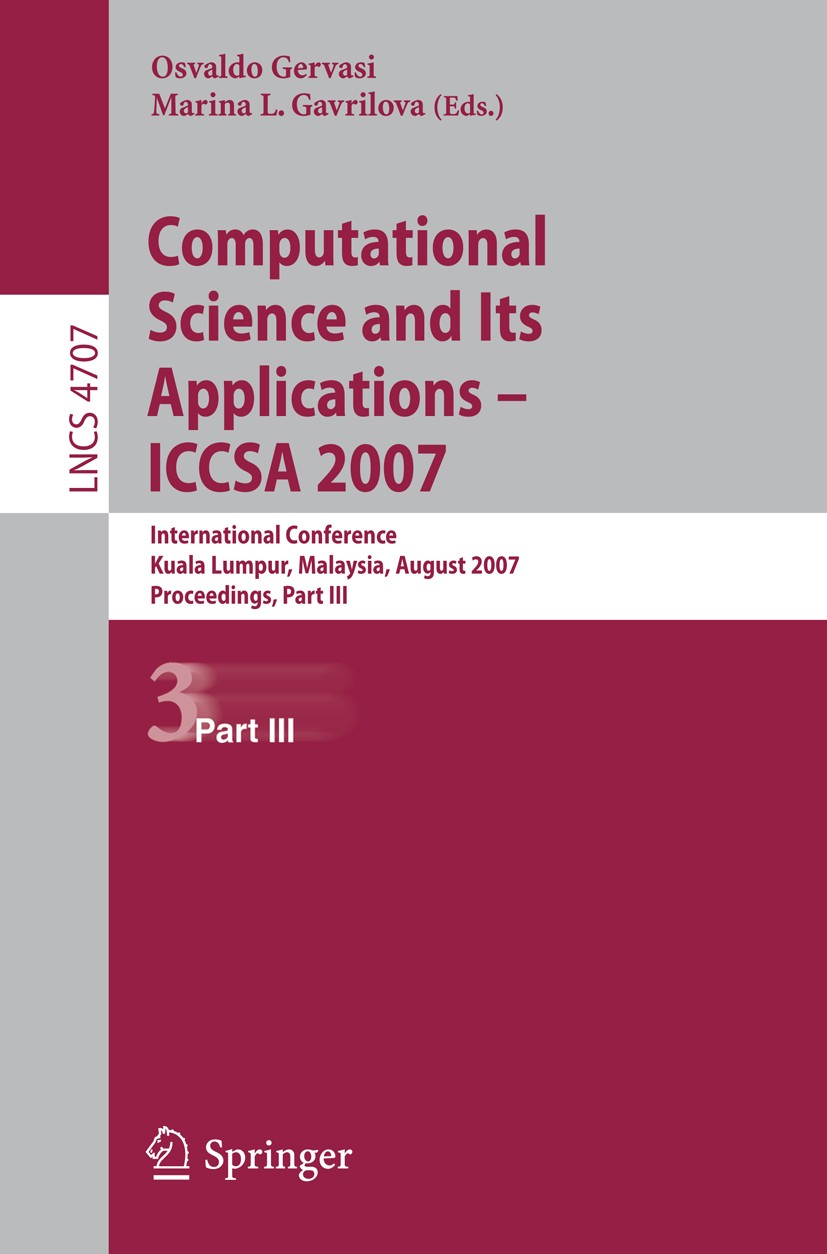| 书目名称 | Computational Science and Its Applications - ICCSA 2007 |
| 副标题 | International Confer |
| 编辑 | Osvaldo Gervasi,Marina L. Gavrilova |
| 视频video | http://file.papertrans.cn/233/232971/232971.mp4 |
| 丛书名称 | Lecture Notes in Computer Science |
| 图书封面 |  |
| 出版日期 | Conference proceedings 2007 |
| 关键词 | Performance; algorithms; computer; computer science; geometric modelling; modeling; visualization |
| 版次 | 1 |
| doi | https://doi.org/10.1007/978-3-540-74484-9 |
| isbn_softcover | 978-3-540-74482-5 |
| isbn_ebook | 978-3-540-74484-9Series ISSN 0302-9743 Series E-ISSN 1611-3349 |
| issn_series | 0302-9743 |
| copyright | Springer-Verlag Berlin Heidelberg 2007 |
 |Archiver|手机版|小黑屋|
派博传思国际
( 京公网安备110108008328)
GMT+8, 2025-12-18 02:18
|Archiver|手机版|小黑屋|
派博传思国际
( 京公网安备110108008328)
GMT+8, 2025-12-18 02:18


